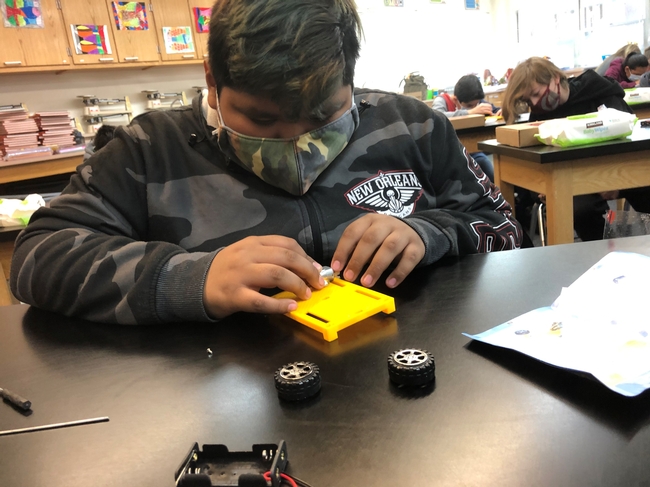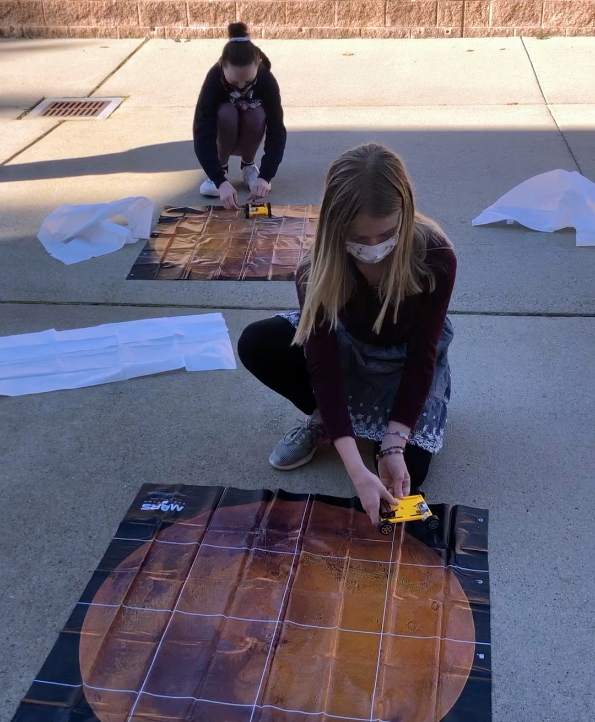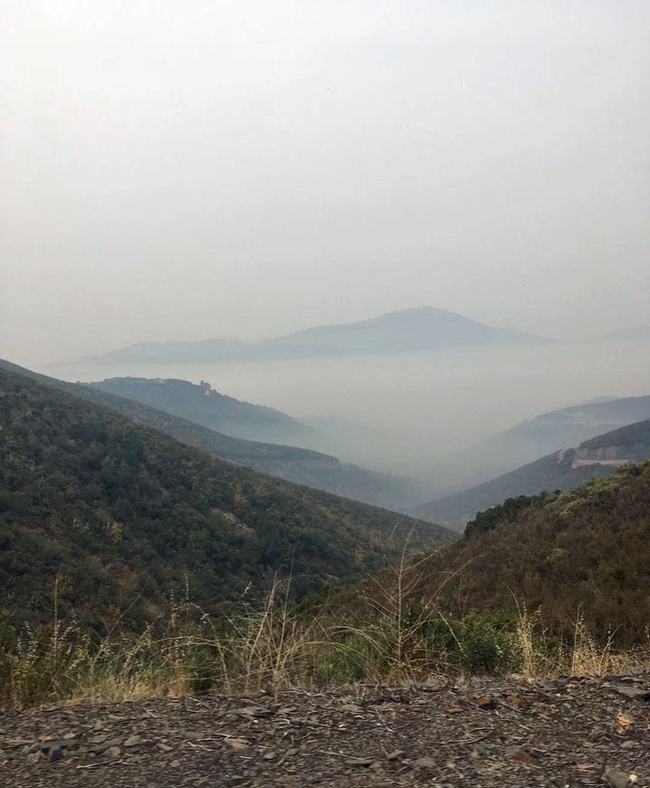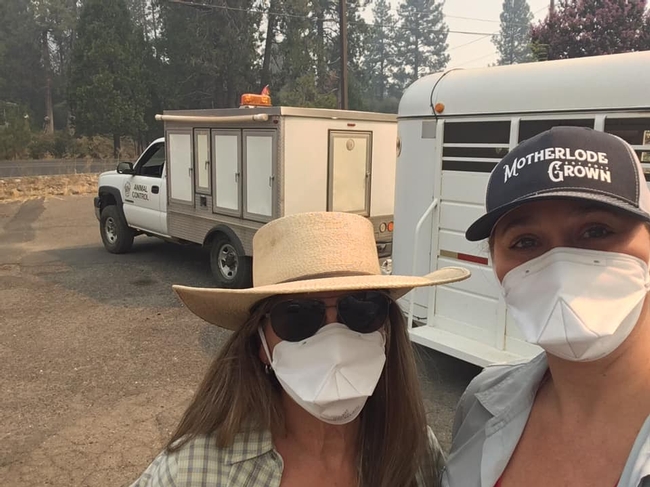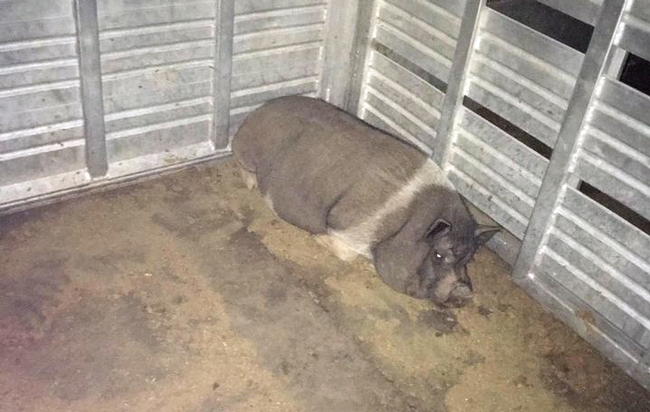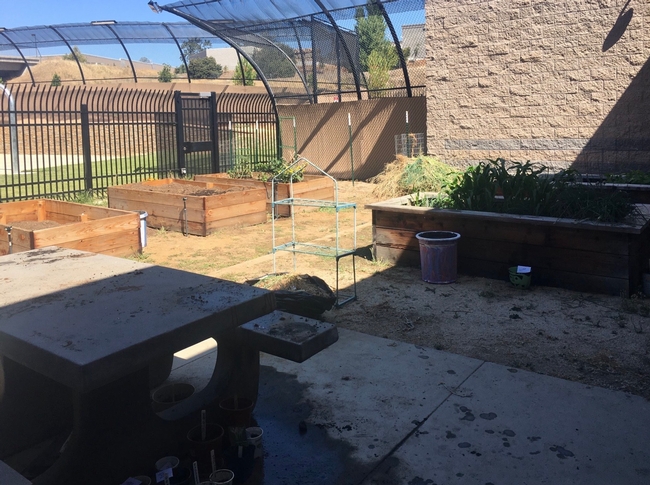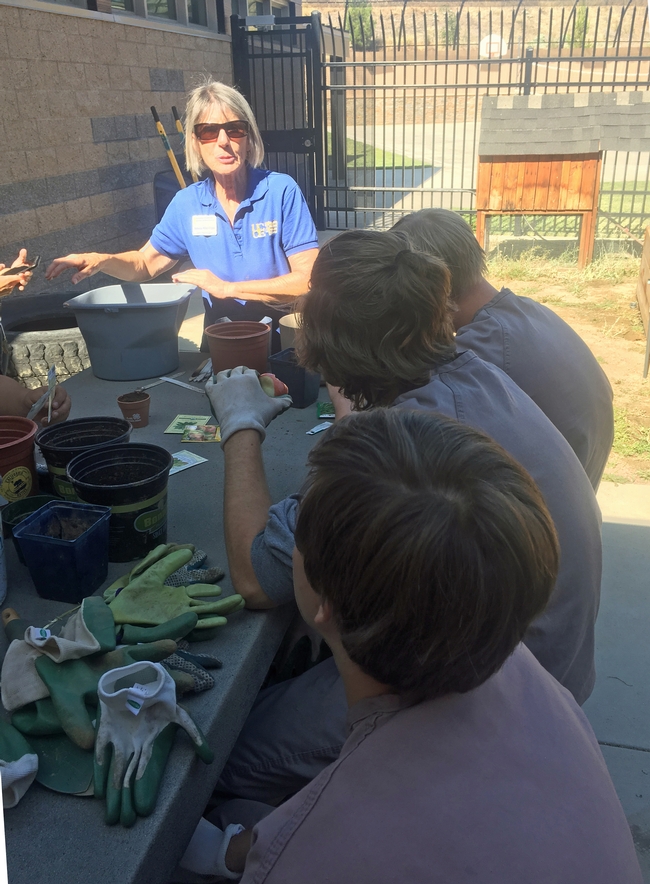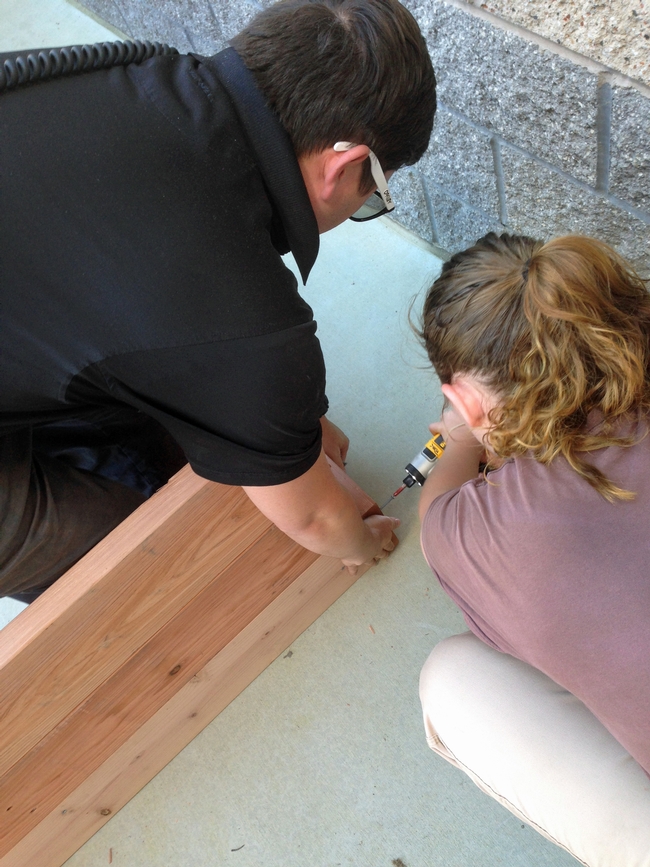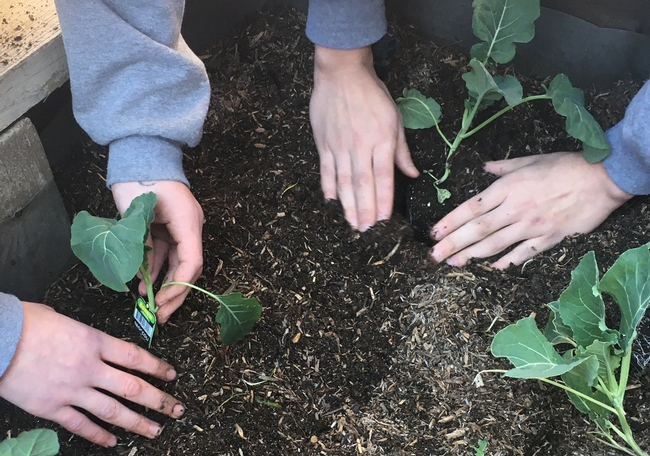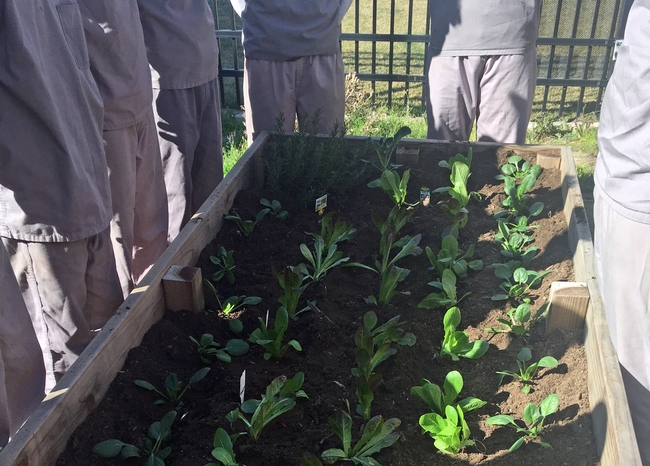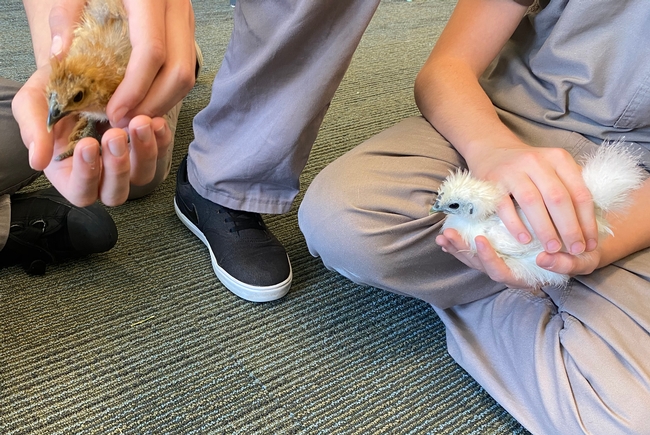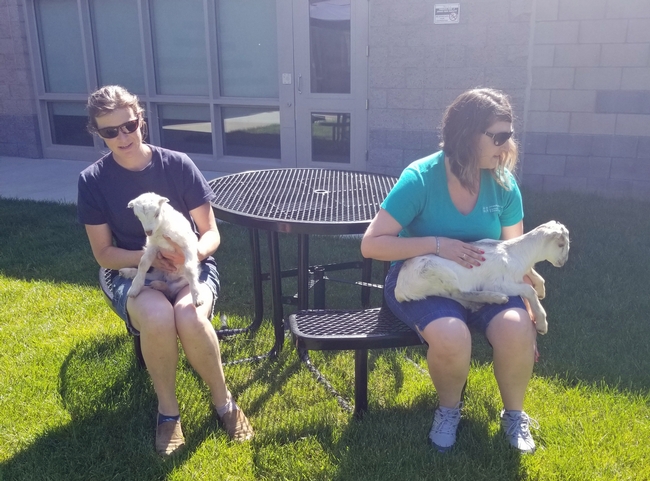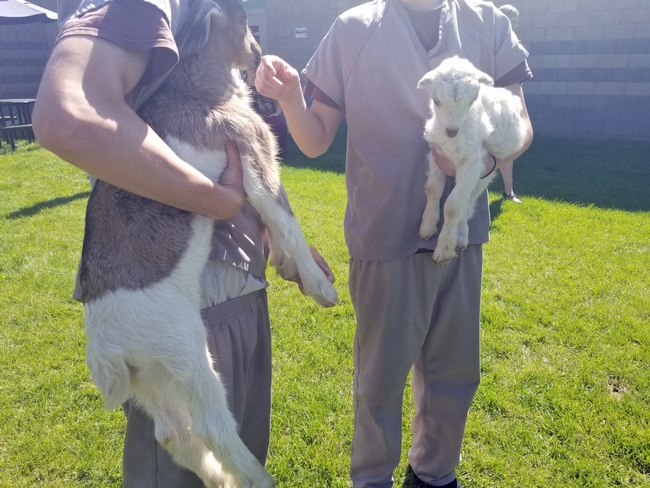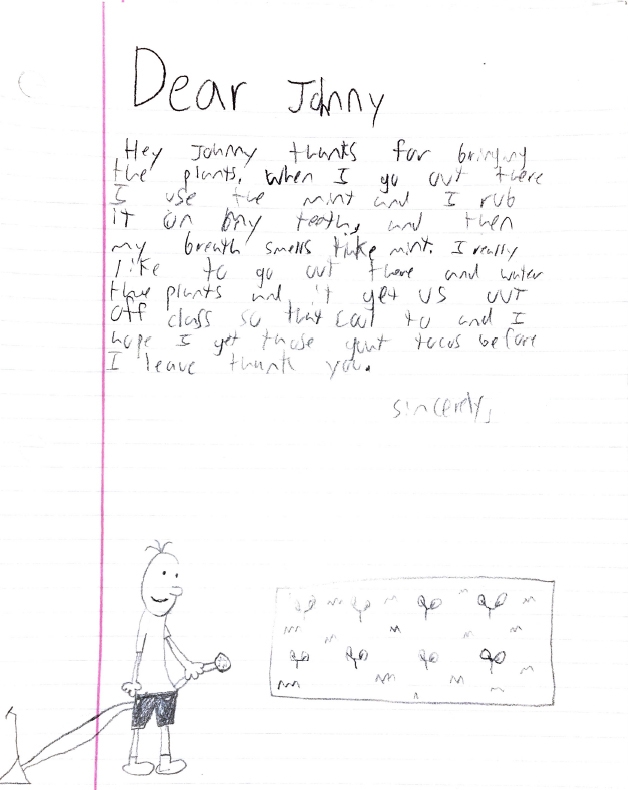Posts Tagged: JoLynn Miller
Students explore Mars with 4-H STEM project
The Perseverance rover will land on Mars on Feb. 18. As part of a science lesson, sixth-grade students at Avery Middle School in Calaveras County explored Mars recently. The other worldly experience was made possible with Mars Base Camp 4-H STEM Challenge kits donated by the University of California's 4-H Youth Development Program in Calaveras County.
Ali Heermance, Avery Middle School sixth-grade teacher, helped her students assemble their Mars rovers for their space lesson, then drive the vehicles over rough terrain created with boxes and books to explore a map of Mars. The 4-H kit includes parts to build the yellow, plastic battery-powered rover.
Along with the rover, the kit includes four activities for students: Landing Zone Surveyor, Crop Curiosity, Red Planet Odyssey and Insight from Mars. Three of the activities don't require internet service, but Insight from Mars requires a computer, laptop or tablet and internet for the coding activity.
“A generous donation to 4-H in Calaveras County made it possible to buy 450 of the Mars Base Camp 4-H STEM Challenge family kits for local school children,” said JoLynn Miller, UC Cooperative Extension 4-H advisor. The kits retail for $17.95 at https://shop4-h.org.
“I was able to buy enough of the 4-H STEM kits for every sixth-grader in Calaveras County and, with the help of Calaveras County Office of Education, send them to their teachers,” said Miller,
“I hope the 4-H activities spark an interest in science, technology, engineering and math in the students,” Miller said. “The activities show kids how STEM skills can be applied to the world around them and because the family kits can be used by three or four people, they can share the experience with their parents and siblings.”
Sixth-grade math hybrid and 100% distance-learning students at Toyon Middle School have also used the kits.
“The kids enjoyed the activities and were very engaged,” said Michelle Olivarria, science teacher at Toyon Middle School.
For the Red Planet Odyssey, each kit contains a vinyl map of Mars and parts for the students to build a rover to explore the planet.
Crop Curiosity is a card game that has students growing plants on Mars in an artificial environment, where they may encounter natural disasters and sabotage. Participants can win items such as soil, containers and grow lights to grow plants.
“One student told me that his family played it and it was fun,” Olivarria said.
Using the program Scratch, students can program their own animated interactive games and stories for Insight from Mars.
“Another one of my students is still using the website to code,” Olivarria said. “He shows me a new coding clip every week. It was wonderful to get the students engaged in hands-on learning and so nice that all of the students had their own supplies.”
Miller hopes the Mars project raises parents' awareness of 4-H in their community and the variety of projects the UC ANR youth development program offers.
Will Heryford of KCRA visited Avery Middle School and interviewed the students about the hands-on exercise https://www.kcra.com/article/sixth-graders-calaveras-county-get-hands-experience-building-mars-rovers/35220966.
UC Cooperative Extension springs into action to aid wildfire recovery
After the destructive LNU Complex Fire burned through farms and ranches where Morgan Doran lives and works, he immediately volunteered to help families and local authorities take care of animal victims.
Doran, the UC Cooperative Extension livestock and natural resources advisor for Yolo, Napa, Solano and Sacramento counties, spent two full days the weekend of Aug. 22-23 in a truck with a county sheriff's deputy escort to search for live animals and provide information on how to handle dead livestock.
Nearly 300 animals – mainly horses, sheep, goats and alpacas – were killed during the LNU Complex Fire in Solano County. Some were hit by vehicles, others couldn't escape burning buildings.
“I helped locate animals that needed attention and shared burial and other disposal options and guidelines,” Doran said. He also created an online survey for dead or missing animal reporting.
Doran, also the director of UC Cooperative Extension in Sacramento, Solano and Yolo counties, and his staff and partner organizations – including the USDA Farm Service Agency, Natural Resources Conservation Districts, local resource conservation districts and county officials – have organized a free webinar to help local residents in fire recovery. The webinar is from 9 a.m. to 12:30 p.m. Thursday, Sept. 10. Pre-registration is required.
Topics to be covered are:
- Navigating the agency alphabet soup for disaster assistance
- Understanding wildland fire impacts
- Impact of fire on oak woodlands, what to expect and what to do
- Impact of fire on rangelands, what to expect and what to do
- Impact of fire on orchard trees, what to expect and what to do
- Impact of fire on vineyards and wine grapes, what to expect and what to do
- Erosion risks and mitigation measures
- USDA disaster programs and how to apply
Evacuating animals
In areas where the Moc Fire burned near Moccasin, Calif., UC Cooperative Extension 4-H advisor in the Central Sierra, JoLynn Miller, joined partners to activate Team ELITE (Evacuation of Livestock in Tuolumne Emergencies) so trained volunteers could help move animals to safety and ensure they are fed and housed during the wildfire.
The organization was established in the wake of the 2015 Butte Fire, when officials recognized the need for coordinated animal evacuation planning. They drafted Miller, an experienced horsewoman and community volunteer, to spearhead the group.
“We work closely with and are dispatched by animal control during an emergency,” Miller said. “Team ELITE requires members to be trained in incident command systems and they are sworn Disaster Service Workers once they complete a Team ELITE orientation and training. The Moc Fire was the first fire where we've done evacuations.”
Team ELITE was placed on standby on Aug. 20. A few hours later, three teams were behind the fire lines.
“Volunteers worked throughout the night to pick up animals,” Miller said. “The first night we had donkeys, chickens, horses, alpacas and pigs evacuated.” The animals were held at the Mother Lode Fairgrounds in Tuolumne County.
The team spent three days, Aug. 22-24, feeding and watering animals. Aug. 25 the evacuation orders were lifted and they helped families get their animals back home.
For more information about Team ELITE, see its Facebook page https://www.facebook.com/TeamELITEinformation/
Valuing the losses
Federal, county, CALFIRE and other officials routinely turn to UCCE experts to gather information about the impact of wildfire on agricultural lands.
Two UC Cooperative Extension rangeland advisors, Theresa Becchetti of Stanislaus and San Joaquin counties and Sheila Barry of San Mateo, Alameda, Santa Clara and Contra Costa counties, both cover areas burned by the SCU Fire.
In order for a disaster to be declared and for insurance payouts, a value must be attached to losses caused by the wildfire. In rangeland areas, components of the losses include hundreds of miles of fencing, forage, stock ponds and damage to the soil and seedbank that could impede grass growth for years. Livestock may also be lost in wildfires.
“In some respects, the SCU Fire was an invisible fire because it didn't threaten vineyards or redwoods – landscapes that get more attention. It is grassland, oak woodland and brushland. Some very small pockets of forest,” Barry said. “But it is actually the second largest fire in the state's history.”
Becchetti had previously developed a methodology for calculating forage losses. The two scientists were able to use the system for establishing the economic loss to ranchers and government agencies caused by the blaze. CALFIRE also used the information to inform the distribution of its firefighting resources.
“The Farm Service Agency has told us that the information we put together on the value of the area is enough for the local county committees to declare a disaster, which will release emergency cost share programs,” Becchetti said. “We are continuing conversations with the agencies in the four counties and starting to put information out for ranchers.”
UCCE will host meetings regarding fire recovery and disaster assistance programs. Visit local UC Cooperative Extension websites for details.
4-H gives incarcerated youth the freedom to try their hands at growing vegetables
This is the third story in our #NationalWellnessMonth series. See the second story, UCCE promotes nature as a way to improve wellness.
Youth up to 17 years of age who have been arrested or adjudicated for breaking the law are housed at juvenile detention facilities. In Sonora, while the young people are being detained, the staff at Mother Lode Regional Juvenile Detention Facility strive to create a safe environment for the residents to make positive changes in their lives.
To teach the youths about the food system, JoLynn Miller, UC Cooperative Extension's 4-H youth development advisor for Tuolumne County, and volunteers began visiting weekly in 2016 to help the residents develop a garden at the detention facility. With grants from a local community group, the youths have learned how to grow their own vegetables and prepare them to eat.
“The youth enjoy the educational aspect of the 4-H program and are excited whenever we harvest a new vegetable,” Edgar Ortega, juvenile corrections officer, wrote in a letter. “When the vegetables are ready, some of the youth along with the help and supervision of the staff make a new culinary experience for their peers.”
Bonnie Plants donated tomato, garlic, fava bean, onion and basil seedlings. Miller trained volunteers who work with youth at the facility in the same positive youth-development concepts that 4-H volunteers use in 4-H club activities.
“The youth planned and built the raised beds using power drills,” Miller said, acknowledging that it is rare for power tools to be allowed for use by residents in a detention facility. “They worked with the correctional officers to install drip irrigation in the garden.”
At the end of last season, Miller gave the residents a cooking lesson using green tomatoes and basil from the garden. “We made fried green tomatoes and pesto,” she said.
“We sincerely appreciate the efforts 4-H volunteers provide to enrich the lives of all youth in our community,” said Dan Hawks, chief probation officer in Sonora. “Not only do these projects provide real-world, hands-on instruction and skills to incarcerated youth, but it also provides them with an opportunity to reap the rewards of their own efforts. There is no lesson that can match the sense of accomplishment youth realize when they are able to harvest and consume crops they planted and tended themselves.”
In addition to teaching the residents gardening and cooking, Miller provided their teacher and staff with other 4-H curriculum, including mindfulness.
“The mindfulness program helps the youth develop coping skills and become more cognitively aware of themselves and their surroundings,” Ortega said in his letter. “The youth are open-minded about the different techniques and lessons of the program and, at times, I catch them practicing the different mindfulness technique on their own. I know the mindfulness program is great for our youth because in their own home environments they don't always have a role model to teach them proper coping skills.”
The garden wasn't an instant success. Using seeds Miller found in the UC Cooperative Extension office, their first lesson was persistence despite delayed satisfaction. “We tried for two summers to grow in the garden beds and not even zucchini would grow. The placement was bad,” she said. The plants needed more sun.
The 4-H advisor and the youths began seeking funding to buy supplies for the project. With some coaching from Miller, the youths applied for a grant from Farms of Tuolumne County, which advertised a total of $1,500 to be split between awardees.
“The youth came up with a budget to build the beds of their dreams, but it was $2,200,” Miller said. “They asked for it anyway, knowing they may only get enough money to build one bed.” Because residents are not allowed to leave the juvenile correctional facility, the Farms of Tuolumne County Board of Directors visited the facility to hear the teenagers present their vision for the garden project. Impressed, the board gave them the full $2,200 requested.
“The Farms of Tuolumne County Board of Directors admires the enthusiasm of the young people who are part of this garden project, the dedication of the staff, and the hard work and commitment of JoLynn Miller,” said Marian Zimmerly, FOTC chief financial officer. “The board believes this project can be a positive influence on the young people who find themselves in the facility. FOTC is honored to lend its support.”
Like many community groups, Farms of Tuolumne County is suffering financially during the coronavirus pandemic, yet approved another $750 for the garden and other 4-H agriculture projects at Mother Lode Regional Juvenile Detention Facility, saying, “The FOTC Board of Directors continues to view the garden project at the Juvenile Detention Center as very worthy of support.”
The residents have expressed their appreciation to the 4-H program. “Thx for everything you showed us,” one resident wrote to Miller and her 4-H volunteers. “I've learned a lot since I first got here. I learned how to farm, make compose [sic] and a whole other bunch of stuff. I was never really interested in gardening until I came here. I really wanna learn more about gardening.”
Despite the constraints caused by the pandemic, Miller plans to continue the 4-H partnership with Mother Lode Regional Juvenile Correctional Facility on the garden project and other agricultural educational activities.
As the pandemic began, Miller was given permission to use Zoom to deliver embryology lessons and science experiments using eggs. She is projected onto a big screen in a meeting room while the officer on duty walks around the room with an iPad, using its camera and microphone to connect her with the students at different tables doing experiments such as egg dissection and testing egg strength.
She was allowed to bring five-week-old chicks into the facility to let the youth see, touch and hold them as a capstone to the project. Miller plans to continue meeting with the youths via Zoom to discuss projects and drop off approved project supply kits for them to use.
“We'd like to finalize a project we started last fall where we brought in baby goats,” Miller said. “They've since been harvested, and we want to have our UC Cooperative Extension nutrition, family, consumer sciences advisor Katie Johnson provide a nutrition lesson with the residents making goat tacos.”
As time permits, officers take the youths outside to water plants and harvest crops in the garden.
“I feel the programs and workshops provided by 4-H services are a priceless resource to the youth of our facility,” wrote William Neilsen, senior juvenile corrections officer. “It allows us to diversify programming and provide hands-on and -off educational opportunities within our facility that teach the youth about agricultural resources otherwise unavailable to the youth here. These programs inherently teach the youth responsibility and life skills and the youth gain a wealth of knowledge from these services.
“Additionally, I strongly believe there is a therapeutic resource provided to staff and youth alike. As we progress forward, I am happy and excited in the continued partnership we have with the UCCE 4-H program of Tuolumne County.”
Ortega added, “4-H provides the youth an opportunity to develop life skills that will transition to their own home environments.”

